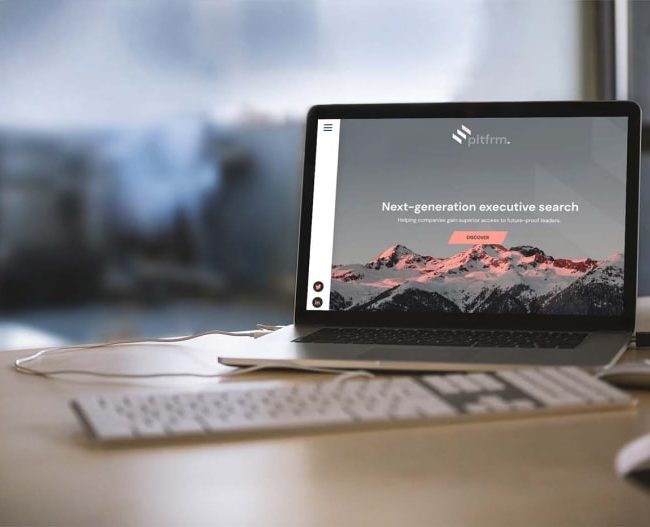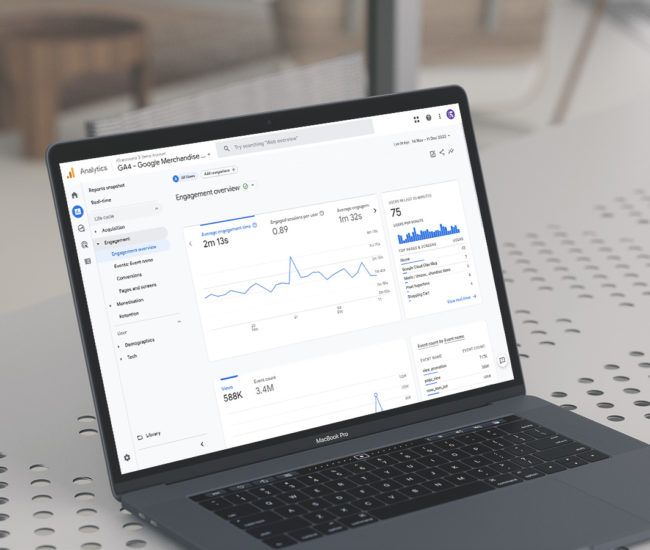Google Grants for UK charities. Find out how to apply, set up and optimise
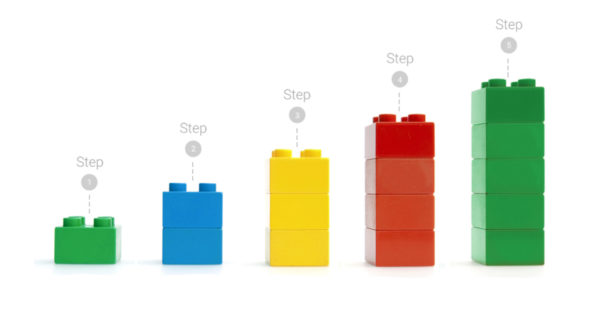
The Google Ad Grants Program gives charities & non-profits the chance to advertise on Google Ads for free.
The program gives qualified organisations up to $10,000 (around £8000) free advertising spend per month.
With successful management, your charity and its causes can reach new users, donors, volunteers and campaigners.
We outline the steps needed to taking advantage of Google Grants and run a successful campaign.
Do you qualify?
To be eligible for Google Grants charity ppc an organization must:
- Hold current and valid charity status (i.e. Registered with the Charity Commission for England and Wales; and/or Registered with HM Revenue & Customs as a charity for tax relief.)
- Acknowledge and agree to Google’s required certifications regarding non-discrimination and donation receipt and use.
- Have a live website with substantial content.
Governmental entities and organizations, hospitals and medical groups, schools, academic institutions and universities are not eligible for Google for Nonprofits, but philanthropic arms of educational institutions are eligible.
How to stay qualified
To maintain your eligibility for Google Ad Grants, your organisation must abide by program policies.
- All the ads in your account must link to the non-profit URL that was approved in your application process.
- You must be engaged and proactive in your Google Ads account by logging in to the account, at least, monthly.
- The ads you are promoting must reflect the mission of your non-profit. You can advertise to sell products as long as 100% of the proceeds are going to support your program.
- The ads you create cannot point to pages that are used to primarily send visitors to other websites.
- Your ads cannot offer financial products, such as mortgages or credit cards.
- Your ads also cannot be asking for donations in the form of large goods such as cars, boats or property donations. Keywords related to this activity are also not allowed.
- Your website cannot display ads from Google AdSense or other affiliate advertising links while participating in Google Grants
- A daily budget set to $329 USD, which is equivalent to about $10,000 per month
- A maximum cost-per-click (CPC) limit of $2.00 USD. (without bid strategies)
- Paid adverts will always appear above grants adverts.
- It is limited to the search market. You cannot run ads in the display market.
- Ad Grantees may only promote mission-based ads and keywords in their Google Ads account:
These new conditions were brought in Jan 18
- Maintain a 5% Click through rate (CTR). CTR is the ratio showing how often people who see your ad end up clicking it. If your account doesn’t achieve at least a 5% CTR for two consecutive months, your account will be cancelled.
- Non-profits cannot buy branded keywords they don’t own.
- Keywords must have quality scores of 3 or higher.
- Campaigns must have at least two ad groups with at least two ads running in each.
- Accounts also must have at least two sitelink extensions active.
- Accounts must have geotargeting.
- Most single-word keywords are prohibited, the idea being non-profits should choose well-targeted keywords.
Final Thoughts: This should go without saying, but Google isn’t in the business of giving money to organisations that preach hate or practice discrimination.
Targeting keywords or using destination URLs that promote hatred, intolerance, discrimination, or violence is strictly prohibited. It’s also worth noting that, to continue receiving a Google Ad Grant after January 1st, 2018, your organisation must exist exclusively for charitable purposes. Failure to comply with any of these terms will result in the automatic suspension of your account.
Then explains the important steps required to overcome the problems, before requesting Google reactivate your charity PPC account.
Setting up and applying for Google Grants
There are a few Google hoops to jump through to qualify and maintain the charity PPC grant funding. Google breaks this down into a simple 5 step process:
Step 1 – Are You Eligible
Review the first section to see if you are eligible. If your organisation meets those requirements then please move onto step two.
Step 2 – Setting up a Google for Non-profits account
To set this up you’ll need:
To register with tt-exchange, the UK arm of TechSoup. If you’re not registered with them yet then it’s easy to set up an account.
A Google account of some form. This could be the account that you already use for Google Analytics or YouTube.
Once you’ve got these set up the next step is to begin filling out a straightforward application form.
During the process, Google will need information about your charity. Including the ‘validation token’ from to TechSoup (which you signed up to a minute ago) and your charity ID.
Step 3 – Wait for a decision
The waiting game after that you will have to wait to see if you have been successful. This can take anywhere from a few seconds to up to two business days.
Step 4 – Google Ads Account Configuration
The Google Ads account configuration (the tricky part). To succeed in the application, you need to follow Google guidelines. Including setting up bidding information and setting a final URL.
If you are new to Google Ads this can seem quite confusing, but the advice is in on hand. Do contact if you have a problem with any of these steps.
Tip: Set up one rough campaign at first to see if you qualify before spending time structuring the entire account. If you think you’ve met the Google Guidelines go back to the application process so Google can review the account.
Step 5 – Wait for confirmation
Have You Been Successful?
After you’ve submitted your Google Ads Customer ID, you’ll receive a decision within 5 business days. If you have set up the Google Grants Ads correctly, you’ll receive an email telling you that your account is now active. If there are errors, you’ll get an email with instructions on how to correct the errors.
Google Grants Management & Optimisation
To get the most out of the grant you do need an understanding of how Google AdWords works and will need to actively manage your account.
Here at Granite 5, we have helped lots of charities obtain Ad Grants and manage them on their behalf.
I’ve seen many accounts where in-house management has resulted in the same common issues. Resulting in wasted spend and poor returns.
If you are managing a Google Ads that have any of those common issues then it might be time to outsource Google Ads management to an agency.
To stop charities from falling into the same pitfuls. I’ve detailed some Google Ads management tips.
Organise Campaigns Into Categories
Structuring your PPC campaigns and ad groups by type makes your outreach more effective. A good starting point is to build your Google Ads account so that mirrors your website structure. Then look at how campaigns can be further broken down.
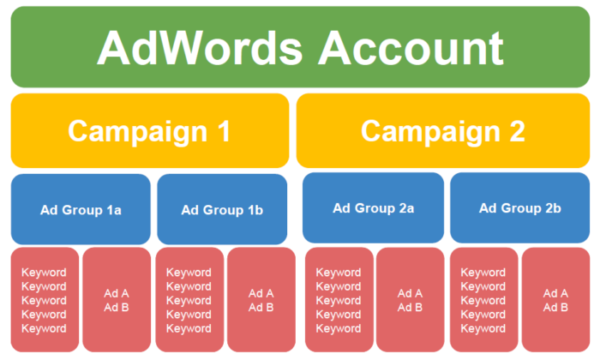
Some examples might include:
- General Awareness – This campaigns include board topics and should include more generic keywords. Aiming to reach a wide audience building your awareness for your cause.
- Benefit & Volunteering – This might include campaigns that use the keywords terms like “help”, “contribute”, “support”, “volunteer” or “donate”.
- Recipient Benefit Focused – This might include keywords that use the modifying terms “save”, “stop”, “prevent”, “achieve” or other such words.
Events – Local, national or even global events deserve a campaign that promotes them. You can choose to target a specific set of countries, cities where the event is taking place, via Geotargeting.
- These campaigns would have ads that are time-dependent.
- Brand – Branded campaigns are a great way to build your accounts CTR. More on this later.
Keyword Match Types
When creating a text ad in your PPC campaign, you can select broad match, modified broad match, phrase match, or exact match for your keyword match type. WordStream provides a great guide of advantages and disadvantages of each type.
Match types can have a major impact on your account’s performance.
Optimising your use of Google Ads match types is crucial because it allows you to reach your target audience while avoiding unnecessary spend on irrelevant clicks.
Use Long-tail Keywords
Long-tail keywords are longer and more generic phrases that user is more likely to search with they’re closer to a point-of-purchase.
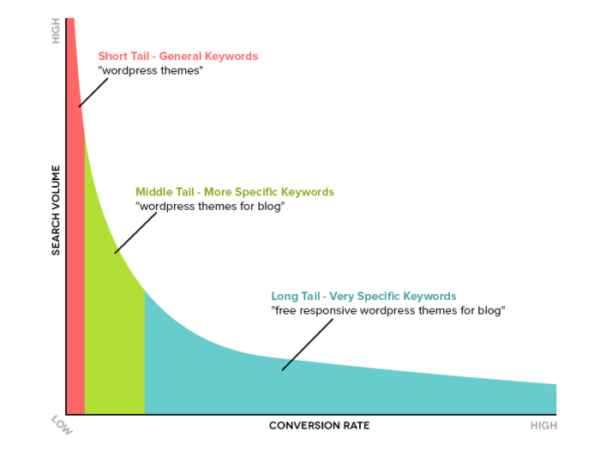
When pondering long-tail keywords answering questions should be your best friend. Think of the WHAT, WHO & HOW that your charity offers.
- HOW do people find you?
- WHAT services to people require?
- WHO needs your services
- HOW do people benefit?
- HOW do you solve an issue?
Thinking of your service in this context can help give you ideas for keywords.
Helping to expand your current selection of keywords to include in your ad campaigns.
Remember, as the graph shows you might not be receiving a huge volume of traffic for these terms. But they might be more relevant.
Maintaining Click-Through Rate
Click-through rate (CTR) is a metric that measures the number of clicks advertisers receive on their ads as a ratio of the number of impressions. All Google Ads Grants accounts must maintain a 5% CTR each month.
In the event that the CTR requirement is not met for two consecutive months, your account will be cancelled.
You may request that your account is reinstated after you’ve paused or deleted keywords with low CTR to bring the account into compliance.
There are a few ways to maintain a strong CTR:
Split testing ads
Grant requirements mean you must have at least two ads per ad groups. This gives you the opportunity to test ad copy. With time and data, you can then determine which ad has the best CTR. You can then choose to replace the lesser performing ad attempting to create an ad which will perform better than your best ad.
Review the search term report
The search term shows the actual searches your ads appeared for. This report can help highlight keywords that you should add as keywords or negative keywords. More on negative keywords later.
Branded campaign
Brand campaigns can have a massive CTR compared to other more standard campaigns. This will benefit the account helping maintain the required 5% CTR.
Adding negative keywords
A negative keyword is a word or phrase that allows you to block with searches will trigger your ads. Once you have decided that a term is irrelevant to your campaign, you can add that term as a negative keyword. The is where the search term report is helpful for inspiration on negative keywords.
Conversion & Monitoring
Just because it’s free traffic it doesn’t mean you should not be measuring its impact.
Disruptive Advertising showed how few accounts have effective conversion tracking in place.
Without it is almost impossible to effectively optimise your charity PPC account. We suggest setting up conversion tracking via another useful tool Google Tag Manager.
The bare minimum, you should link your Google Analytics with your Google Ads account. This enables you to monitor how traffic is interacting with your website.
Tracking will enable you to make better decisions for your non-profit account.
Final Tip – Continuous improvement
There are many success stories from companies using Google Grants which Google are more than happy to highlight. The key to managing a Google Grant account is this: don’t walk away and forget it’s running (As stated it needs active account management to get the maximum impact).


